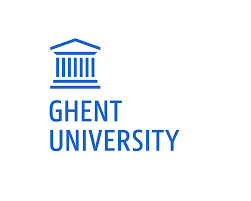
Gap in The Market
Much has been discussed recently over the efficacy of artificial atoms — more commonly known as “quantum dots” (QDs) — for a number of applications like light-emitting diodes, photovoltaics, photodetectors, photoconductors, and catalysts. Already used in QD-based displays, for example, it’s only a matter of time before they become a somewhat common component (if that’s the right word) in other applications, too.
And these semiconductor particles, just a few nanometres across, possess optical and electronic properties that are somewhat different from bigger particles because of quantum mechanics.
Seeing a gap in the market, a Ghent University (UGhent) spinoff called QustomDot — an advanced materials startup that manufactures on-chip grade and cadmium-free quantum dots — is ready to build the next generation of applications using its novel IP.

Founded in early 2020 by Igor Nakonechnyi, Willem Walravens and Kim De Nolf, QustomDot is based in Ghent, Belgium.
QustomDot
Aware the only commercially available QD technology is the Cadmium-based LED chips which is, unfortunately, restricted by the RoHS directive of the European Commission, QustomDot has been working on its own novel QD technology which operates on “non-restricted cadmium-free QDs, stable enough for on-chip usage.” QustomDot’s transformative technology can be used for traditional LEDs for lighting and LCD displays, in mini LEDs, as well as in micro LEDs.

With an impressive €3 million raised shortly after being founded in a Seed round led by the Belgian Qbic Fund, a multi-sector fund supporting spinoff companies in Ghent, Brussels, Antwerp, it seems QustomDot has enough cash reserves to see them into the mid-term at least.
The cofounder, director and CPO of the startup is Igor Nakonechnyi. With a Ph.D. from Chernivtsi National University, Ukraine, in solid-state chemistry, before QustomDot Nakonechnyi was a post-doctoral researcher at UGhent where he focused on bringing QDs towards application through filling the gap of knowledge about stability of QDs and developing large-scale production processes. In 2015, Nakonechnyi was granted an IWT-Vlaio Innovation Mandate in collaboration with Novopolymers NV on developing a scalable technique for making QD foils.
With research interests that stretch to nanotechnology, quantum dots and surface chemistry, Willem Walravens is a Ph.D. student in physics and chemistry of nanostructures at the Department of Inorganic and Physical Chemistry UGhent who has twelve academic publications to his name.
QustomDot’s third cofounder is Kim De Nolf. Possessing a Ph.D. in chemistry from UGhent, De Nolf — like Walravens — has several distinguished papers to boast of, too.

Although the Belgium quantum startup scene seems insignificant compared to its Benelux neighbour, The Netherlands, QustomDot is out to prove the Flemish Region can just be as productive as its Dutch neighbours when it comes to innovation in the space, creating a world where quantum dots are seen as an essential technology for us all.
If you found this article to be informative, you can explore more current quantum news here, exclusives, interviews, and podcasts.



















